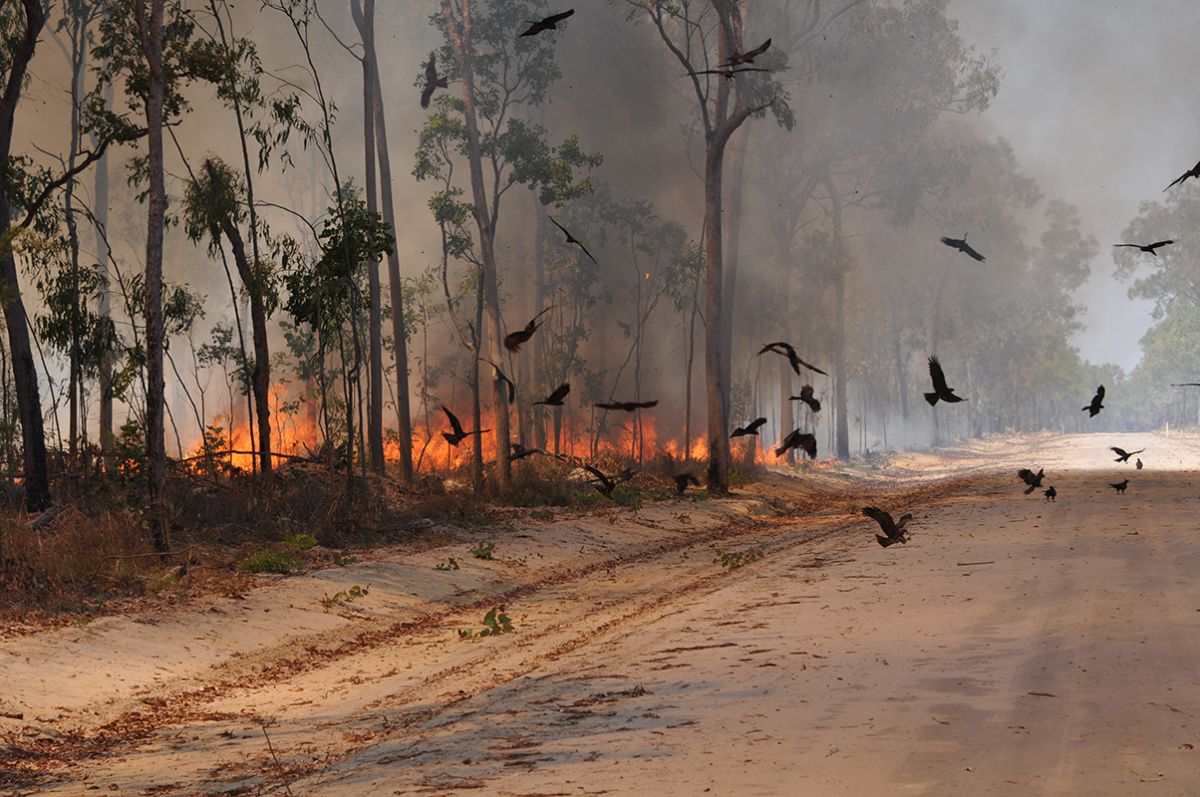There is an opinion that some falcons and kites living in Australia can deliberately start fires in savannas, which sometimes leads to serious consequences. We figured out how well-founded this opinion is.
In the winter of 2019–2020, Australia experienced the most destructive fires on record: some estimates indicate that the total area burned amounted to 18 million hectares, and the amount of damage exceeded 100 billion Australian dollars. Among the possible causes of the disaster are Daily Mail journalists called birds that carry embers and smoldering pieces of wood, thereby deliberately spreading the fire. The publication of the British edition was retold for their readers by Russian-language media, for example the Belarusian Sputnik.
In 2017, a group of Australian and American researchers published scientific article “Intentional spread of fire by “fire falcons” in Northern Australia.” The scientists, led by project initiator Bob Gosford, were inspired by the 1964 book “I, Aborigine,” an autobiography of local resident Alawa Vaipuldanya (Philip Roberts), compiled by journalist Douglas Lockwood. Among Vaipuldanya's recollections is the following: “I saw the falcon grab a smoldering stick with its talons and throw it on the fresh grass half a mile away, and then, together with its brothers, awaited the exodus of burnt and frightened rodents and reptiles.”
Scientists were interested in this story. They explain that fires that occur due to natural causes have “accustomed” the animals to easy prey. Similar behavior of birds was recorded both in Australia and in other regions: Africa, Papua New Guinea, USA, Panama and Brazil. Falcons and kites have begun to take advantage of this: they allegedly try to create a fire and thus provoke potential prey to move so that it becomes noticeable.
Has any definitive evidence been found that some birds in Australia behave this way? Scientists studied ethnographic materials, reports in the local press and groups on social networks, spoke with firefighters and conducted interviews with indigenous residents. The latter reported in large numbers that they had seen arsonist birds more than once. In some ways, local firefighters support the indigenous people: they observed fires appearing in places where everything had already been extinguished. Judging by the descriptions, we are talking about three species of birds: the black kite (Milvus migrans), whistling kite (Haliastur sphenurus) and brown falcon (Falco berigora). At the same time, scientists emphasize: so far it has not been possible to capture in photos or videos birds carrying burning sticks and dropping them on the ground. In a 2016 interview with ABS, project initiator Bob Gosford stated, that he will not be satisfied until he sees such behavior of birds with his own eyes and records it on camera.
The lack of documented photographic or video evidence did not stop the British tabloid Daily Mail from reporting in early 2020, in the midst of the devastating Australian fires. declare: The disaster is aggravated by birds. To support its words, the publication cited footage of kites circling over a scorched field, but the recording is of rather low quality and does not record the fires that started directly because of their actions. Moreover, the Daily Mail, citing the same ABS interview, reports that Gosford confirmed the intentionality of the animals’ actions, although there are no such statements in that material.
This is not accurate
- Mark Bonta, Robert Gosford, Dick Eussen, Nathan Ferguson, Erana Loveless, Maxwell Witwer. Intentional Fire-Spreading by “Firehawk” Raptors in Northern Australia
- https://www.nkj.ru/news/33024/
- https://www.nationalgeographic.com/news/2018/01/wildfires-birds-animals-australia/
- https://www.livescience.com/61375-fire-spreading-raptors.html
If you find a spelling or grammatical error, please let us know by highlighting the error text and clicking Ctrl+Enter.







